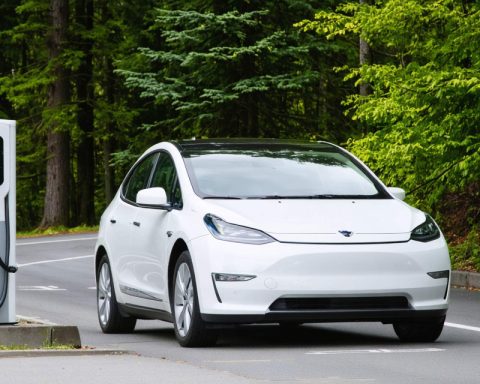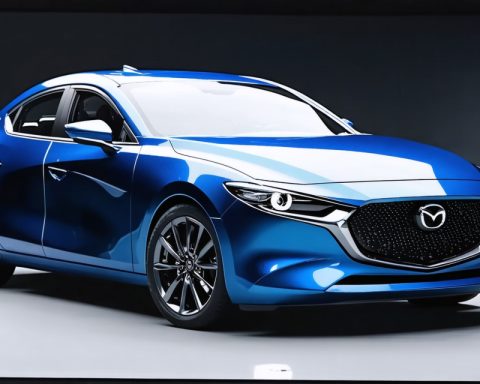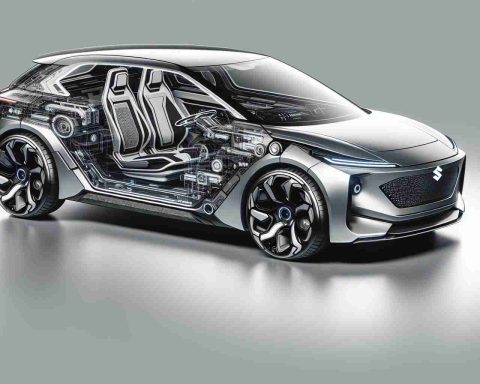- California now hosts 178,500 EV charging ports, surpassing the state’s 120,000 gasoline outlets, highlighting a shift toward zero-emission transportation.
- The California Energy Commission reports a diverse array of charging options, including over 162,000 Level 2 chargers and nearly 17,000 fast chargers.
- The state aims to eliminate new gas-powered vehicle sales by 2035, tied to its ambitious climate goals.
- California is expanding EV infrastructure significantly, focusing efforts on underserved regions with federal aid supporting this growth.
- Nationally, the U.S. and Puerto Rico host over 77,300 EV charging stations, demonstrating a broader trend toward electric vehicle adoption.
- California’s advancements serve as a resilient model for sustainable transportation, setting a precedent for nationwide clean energy transition efforts.
Amidst the rolling hills and bustling freeways of California, a quiet revolution is surging ahead. Electric vehicle (EV) charging ports have now outpaced the state’s traditional gas nozzles, marking a significant shift toward zero-emission transportation. This transition reflects not just a change in technology, but also a cultural pivot as Californians embrace cleaner alternatives.
California’s narrative is written in numbers: 178,500 EV charging ports compared to the estimated 120,000 gasoline outlets. Over the past two years, the state’s charging infrastructure has nearly doubled in capacity, with a recent addition of 26,000 public charging stations. The California Energy Commission highlights the diverse charging options available, ranging from more than 162,000 Level 2 chargers that offer a leisurely boost of 14 to 35 miles per hour to nearly 17,000 fast chargers that can electrify a vehicle in mere minutes.
The Golden State’s electric stride is part of a broader vision. California aims to phase out new gas-powered vehicle sales by 2035, an ambition that aligns with its aggressive climate goals. This forward-thinking path is not without challenges. The federal landscape is fraught with opposition, as demonstrated by recent moves to deprioritize initiatives led by the previous administration aimed at bolstering the EV market nationwide.
Despite these federal headwinds, California remains undeterred. The state continues to invest heavily in EV infrastructure, particularly in underserved regions. A recent allocation of nearly $150 million from the U.S. Department of Transportation supports this vision, earmarking funds to enhance access in areas like Los Angeles County.
The national picture is equally dynamic. Across the United States and Puerto Rico, more than 77,300 EV charging stations dot the landscape, comprising roughly 216,400 public ports. This expanding network underscores a collective momentum towards electrified transportation, though the White House’s current policies present a complex backdrop.
The takeaway? California’s progress is not merely a tale of infrastructure, but one of resilience and commitment to sustainable transportation. As the state accelerates its journey towards a cleaner future, it sets a precedent and potential model for the rest of the country to follow. The open road beckons, electric and bright.
Why California’s EV Revolution is a Game Changer
California’s Charging Network Transformation
California’s shift from gasoline to electric vehicle (EV) charging stations is a groundbreaking development in transportation. With over 178,500 EV charging ports now overshadowing approximately 120,000 gasoline outlets, this pivot reflects a major cultural and technological change. Over the last two years, California has dramatically expanded its charging network, reinforcing its mission to achieve its aggressive climate goals.
How-To: Preparing for EV Adoption
For those considering the switch to an electric vehicle, here are some steps to prepare:
1. Research Vehicle Options: Evaluate the different EV models on the market, considering factors such as range, price, and charging speed.
2. Assess Charging Needs: Determine whether you need a Level 1 (slow) or Level 2 (medium-fast) charger at home, or if you’ll rely on public fast chargers.
3. Explore Incentives: Investigate federal and state rebates or tax credits available for purchasing EVs and home chargers.
4. Plan Maintenance: Understand the lower maintenance needs of EVs compared to traditional cars and locate service providers.
Real-World Use Cases
California’s robust charging infrastructure supports various scenarios:
– Urban Areas: Fast chargers provide convenience for city drivers who need quick boosts during the day.
– Rural and Underserved Regions: New allocations aim to fill gaps in charging availability, encouraging wider EV adoption.
– Fleet Electrification: Businesses transitioning to electric fleets benefit from widespread charging options, reducing downtime and enhancing sustainability.
Market Trends and Industry Forecasts
According to industry experts, the global electric vehicle market is projected to grow at a CAGR of 21.7% from 2021 to 2030. California’s current initiatives position it as a leader in this market, with its policies likely setting the benchmark for other states. The demand for more charging infrastructure will continue to rise, creating opportunities for tech innovation and investment.
Controversies and Limitations
Despite significant advancements, challenges remain:
– Federal Resistance: Current policies at the national level could slow progress or limit funding for EV initiatives.
– Infrastructure Costs: Developing and maintaining charging networks requires significant investment and coordination.
– Consumer Hesitancy: Some consumers are still uncertain about range anxiety and the upfront cost of EVs.
Security and Sustainability Insights
Electric vehicles contribute to energy security by reducing dependence on foreign oil and decreasing greenhouse gas emissions. However, ensuring a sustainable electricity supply to meet anticipated demand is crucial.
Actionable Recommendations
– Monitor Incentives: Keep an eye on changing incentives and policies to maximize benefits.
– Join the Conversation: Participate in community forums or local government meetings to voice support for expanded EV infrastructure.
– Educate Yourself: Stay informed about the latest developments in EV technology and charging solutions.
For further reading or information, visit the California Energy Commission.
California’s journey towards electrified transportation is marked by innovation, resilience, and an unwavering commitment to a cleaner future. As the state continues to lead by example, the possibilities for a nationwide transformation remain electrifying indeed.













